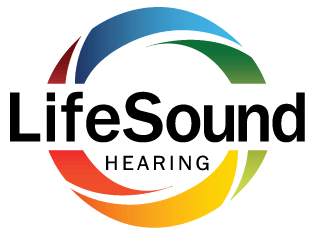Typically, the concept of hearing aids invokes the thought of conventional devices that raise the volume of sound through the canal of the ear. For individuals struggling with specific hearing impairments, such as relentless ear issues or unilateral deafness, a different solution may supply enhanced sound quality and user comfort: bone conduction hearing aids.
The Functionality of Bone Conduction Hearing Devices
With bone conduction hearing devices, the outer and middle ear are bypassed. Rather than sending sound through the air, they transmit vibrations through the bones of the skull to the inner ear (cochlea), where the sound is processed. This means that even if the ear canal is blocked or damaged, sound can still reach the auditory nerve. Think about this example: When you put your hands over your ears and are still able to hear the sound of your own voice while talking, that’s an illustration of bone conduction working.
Bone Conduction vs. Conventional Hearing Aids
Standard hearing aids increase sound and direct it into the ear canal. This works effectively for people with sensorineural hearing loss, where the inner ear or auditory nerve is compromised. On the other hand, if there are issues with the outer or middle ear dued to infection, fluid accumulation, or structural concerns, standard hearing aids may not work efficiently or be comfortable. Bone conduction hearing devices can be a more effective option in such situations as they steer clear of the problematic regions and transfer sound directly to the cochlea.
Best Candidates For Bone Conduction
Situations where bone conduction devices are appropriate:
- Sound waves are not able to travel through the outer or middle ear, leading to conductive hearing loss.
- Persistent ear infections or drainage problems, where conventional hearing aids could worsen the condition.
- Individuals with misshapen ear canals or missing outer ears, who may not be prospects for conventional devices.
- A condition called one-sided deafness, where an individual experiences significant or total hearing loss in one ear. These devices provide a non-invasive alternative that is frequently more comfortable, especially for children and adults who have persisting ear problems.
Implantable vs. Non-Implantable Solutions:
There are two principal categories of bone conduction choices: Implantable and non-implantable devices.
- External non-implantable devices are usually fastened using a headband, softband, or adhesive pad. They are excellent for kids, people experimenting with bone conduction for the first time, or individuals who are not prepared for surgery.
- Surgically embeded devices consist of a tiny device inserted underneath the skin, which is connected to a separate sound processor mounted outside the body. Long-term users typically find that they provide more effective and reliable results. A professional evaluation by an audiologist or ENT specialist will identify the most suitable solution for you, taking into account your age, individual anatomy, and personal hearing objectives.
Key Advantages of Bone Conduction Hearing Devices
- Ideal for sensitive ears – does not necessitate insertion into the ear canal
- Clear sound quality, despite having persistent ear issues
- Perfect for individuals with distinct physical characteristics – this option is particularly helpful for people with congenital conditions affecting the outer ear or other physiological variations.
- Enhanced communication is particularly advantageous in instructional settings, professional environments, or noisy surroundings
If you or your child has difficulty hearing in one or both ears, particularly because of recurring infections or issues with sound transmission, it may be helpful to think about bone conduction hearing devices.
Make an appointment with an audiologist today to get further information.
Sources: https://www.dukehealth.org/treatments/ear-nose-and-throat/bone-conduction-hearing-aid https://www.hopkinsmedicine.org/health/treatment-tests-and-therapies/baha–the-implantable- hearing-device https://www.ndcs.org.uk/advice-and-support/all-advice-and-support-topics/hearing-aids- implants-and-assistive-technology/ hearing-aids-and-implants/ bone-conduction-devices https://my.clevelandclinic.org/health/treatments/14794-bone-anchored-auditory-implant

